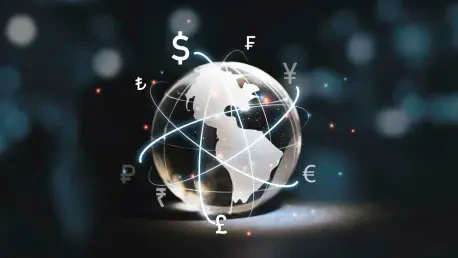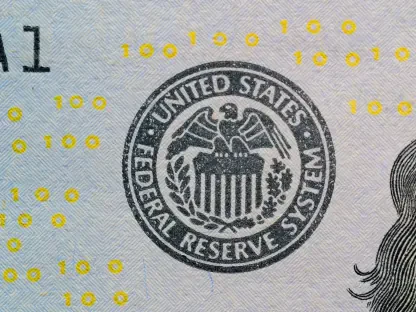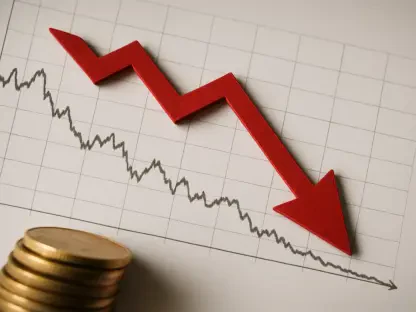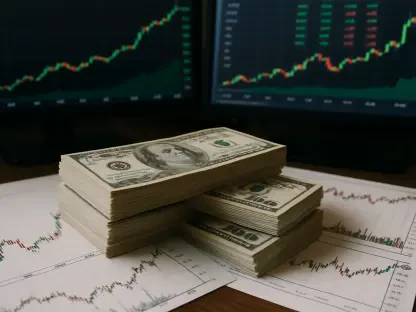In an era marked by economic uncertainty and fluctuating financial indicators, the specter of stagflation—characterized by persistent inflation intertwined with stagnating growth—is once again looming large on the global stage. This unsettling scenario disrupts standard economic norms and poses formidable challenges to policymakers, businesses, and consumers worldwide. As global economies tread cautiously through potential minefields of fiscal turbulence, understanding the trend of stagflation and its implications is crucial for navigating these choppy economic waters.
Understanding Stagflation
Historical Context and Definitions
Stagflation is a perplexing economic condition that defies conventional economic theory, which traditionally assumes inflation and unemployment move inversely. Originating in the 1970s, the concept first gained prominence during an era marked by skyrocketing oil prices and recessionary forces, which resulted in simultaneous inflation and high unemployment. Historical data from that decade illustrate economic paralysis, with double-digit inflation rates coupled with suppressed growth, culminating in socioeconomic turmoil.
The historical occurrences of stagflation have left a prominent imprint on economic policy formulation. Past strategies employed to combat such a condition involved a delicate balance between monetary and fiscal policies, often with mixed outcomes. Drawing parallels between now and then, it’s essential to grasp these historical contexts to strategically respond to contemporary signs of stagflation risks.
Current Indicators of Stagflation
Today, numerous indicators suggest the possibility of returning stagflation, driven by a complex interplay of geopolitical and economic forces. Reports from reputable sources highlight rising inflationary pressures stemming from fiscal deficits, trade disruptions, and resource scarcity, indicating an economic environment ripe for stagnation. The gradual recovery from a global pandemic has exposed vulnerabilities, further exacerbating inflation and slowing growth.
The contemporary data portray a challenging scenario, with major economies experiencing sluggish growth rates amidst escalating price levels. Analysts caution against complacency, underscoring the intricate interplay of global financial policies and uneven economic recovery patterns, which fortify the stagflation narrative in today’s interconnected world.
Real-World Implications of Stagflation Risks
Case Studies and Applications
Stagflation risks have already begun to manifest in various economies, causing sectoral and regional disruptions. Case studies illustrate how certain industries, particularly in energy and manufacturing, face burgeoning costs against a backdrop of muted consumer demand. Notably, some nations experience rising unemployment alongside a diminishing purchasing power, reminiscent of past stagflation periods.
Prominent companies, grappling with input cost inflation and stagnant consumer markets, serve as cautionary tales of stagflation’s extensive impact. The experiences of these entities offer valuable insights into the ripple effects of stagflation on global supply chains, labor markets, and financial health, emphasizing the urgent need for strategic interventions.
Market Response and Business Adaptations
Businesses across sectors are proactively devising strategies to mitigate stagflation risks, demonstrating notable adaptability and resilience. The market response has been a mix of innovation and caution, with companies deploying measures such as cost-control initiatives and diversifying supply chain dependencies to buffer against inflation and demand shocks.
Forward-thinking organizations leverage technological advancements and agile frameworks to navigate these complex dynamics, aligning tactical measures with long-term economic forecasts. By focusing on efficiency gains and enhancing value propositions, businesses position themselves better to endure the challenges posed by potential stagflation scenarios.
Expert Insights and Perspectives
Insights from economists and industry experts shed light on the multifaceted challenges posed by stagflation. In interviews and reports, these thought leaders provide nuanced perspectives on the underlying causes, significance, and possible solutions to this economic anomaly. They underscore the importance of coordinated global policy responses to stave off the adverse effects of inflationary stagnation.
Experts argue for a balanced approach to monetary and fiscal policies, highlighting the significance of sustainable growth initiatives born out of robust economic governance. This dialogue enriches the broader discussion on stagflation, encouraging informed decision-making and strategic partnerships to bolster resilience in an era fraught with economic unpredictability.
Future Outlook and Implications
Reflecting on the future, it’s crucial to examine how looming stagflation risks may shape the global economic landscape. Even as challenges abound, potential developments, such as energy transitions or trade realignments, could lead to unexpected opportunities amidst uncertainty. The broader implications arise across various industries, stressing the need for strategic foresight and adaptability to weather the potential economic storms ahead.
Navigating this uncertain future requires a keen understanding of economic shifts and proactive strategies to address inflation pressures while fostering sustainable growth. As economies worldwide prepare to tackle these challenges, they must consider new strategic directions and cross-border collaborations as essential elements of a resilient economic future.
Conclusion and Call to Action
Stagflation presents a unique set of challenges requiring comprehension and strategic approaches to mitigate its impact. Stakeholders must remain vigilant, leveraging historical insights and current indicators to diagnose and combat the economic threats posed by this condition. Cooperation and innovation stand as pillars against the rising tide of stagflation, calling for comprehensive initiatives that safeguard economic stability.
Policymakers, business leaders, and consumers must engage collectively in crafting responses that address the dual pressures of inflation and stagnation. By adopting forward-thinking strategies and maintaining an agile stance, the global economy can navigate these perilous waters. The path ahead demands strategic foresight and concerted efforts that drive sustainable economic prosperity, steering away from stagflation’s shadow.









